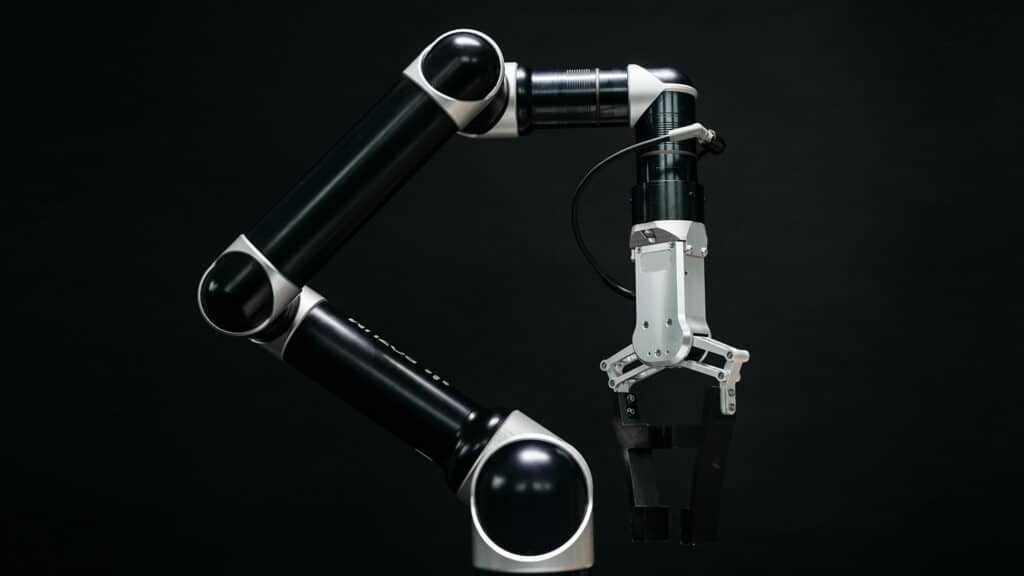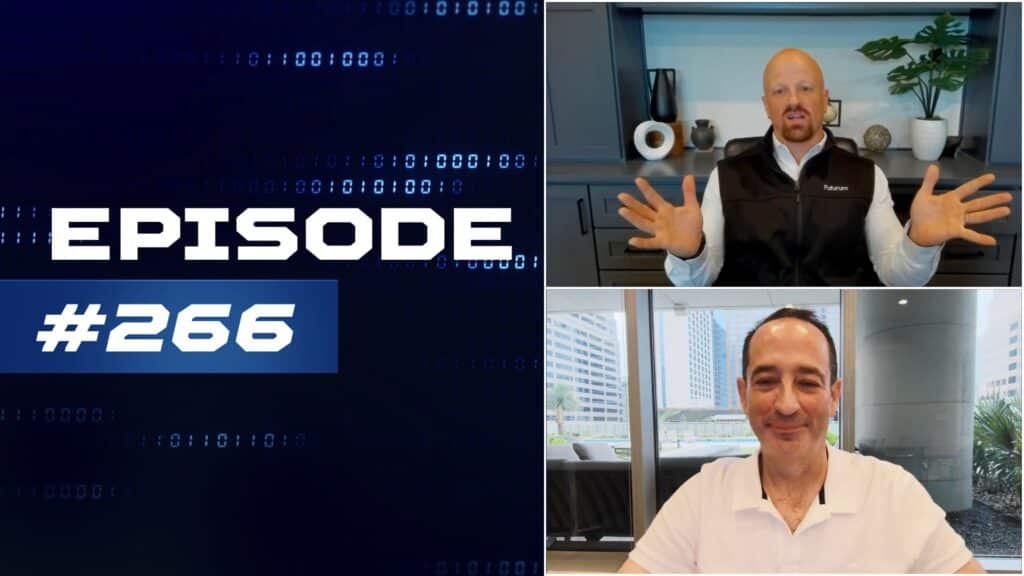In this episode of The 5G Factor, our series that focuses on all things 5G, the IoT, and the ecosystem as a whole, I’m joined by my colleague and fellow analyst, Todd R. Weiss, for a look at the top 5G developments, including recent vRAN developments and how key players such as Marvell, Intel, Ericsson, Samsung, and Nokia Have Juiced vRAN innovation.
Our conversation underscored:
Intel Delivers vRAN Boost to 4th Gen Intel Xeon Scalable Processors. Intel announced the commercial availability of 4th Gen Intel Xeon Scalable processors with Intel vRAN Boost, following its initial unveiling at MWC 2023. By fully integrating vRAN acceleration directly into the CPU, Intel has now eliminated the need for an external acceleration card. Eliminating the acceleration card not only reduces system complexity, but also provides notable power savings. Major communications service providers (CSPs), such as Rakuten Mobile, Deutsche Telekom, and Vodafone are collaborating with Intel on applying vRAN Boost capabilities across their networks. We examine why this design innovation—Intel vRAN Boost—is a genuine breakthrough for the entire vRAN market.
Samsung and Intel Expand vRAN Collaboration. Samsung is expanding its collaboration with Intel through their new product innovation agreement, allowing the companies to continue developing vRAN for enhanced performance and capacity. Samsung will integrate its vRAN 3.0 software with 4th Gen Intel Xeon Scalable processors plus Intel vRAN Boost to advance its vRAN solutions. Offering increased capacity, Samsung’s enhanced vRAN can now support more cells with the same number of servers, which would provide power savings and cost efficiency gains, augmented by improved automation, to CSPs. We assess the market impact of Samsung’s latest vRAN 3.0 portfolio developments, including 200MHz 3-Cell support for 64T64R Massive MIMO radios.
Ericsson on Board for Intel’s 18A Process. Intel announced a strategic collaboration agreement with Ericsson to use Intel’s 18A process and manufacturing technology for Ericsson’s next generation 5G infrastructure. As part of the agreement, Intel will manufacture custom 5G SoCs for Ericsson to create products for future 5G infrastructure. Additionally, the companies will expand their collaboration to optimize 4th Gen Intel Xeon Scalable processors with Intel vRAN Boost for Ericsson’s Cloud RAN solutions to help CSPs increase network capacity and energy efficiency while gaining greater flexibility and scalability. We assess why the expanded Ericsson alliance displays confidence in Intel’s 18A process technology and underscores the ongoing progress with Intel’s five-nodes-in-four-years roadmap.
Marvell OCTEON Fusion Font of vRAN Innovation. With a comprehensive set of inline 5G hardware accelerators, standard PCIe server interface and full Open RAN compliance, software developers can leverage Marvell’s OCTEON Fusion silicon hardware, as well as any standards-compliant Data Processor Unit (DPU), without the need to know its detailed implementation. Moreover, the OCTEON Fusion vRAN accelerator, in the form of a PCIe card, is host server CPU agnostic – both Arm- or x86-based – and supported by multiple OEMs from both the RAN and server segments. Marvell is also working directly with hyperscale cloud customers on vRAN enablement. We evaluate the ecosystem impact of Marvell’s OCTEON Fusion including how Nokia is using customized Marvell OCTEON silicon to augment its ReefShark chipset family across key applications such as multi-RAT RAN and transport.
Watch The 5G Factor show here:
Or Listen to the full audio here:
If you’ve not yet subscribed to The 5G Factor, hit the ‘subscribe’ button while you’re there and you won’t miss an episode.
Disclosure: The Futurum Group is a research and advisory firm that engages or has engaged in research, analysis, and advisory services with many technology companies, including those mentioned in this article. The author does not hold any equity positions with any company mentioned in this article.
Analysis and opinions expressed herein are specific to the analyst individually and data and other information that might have been provided for validation, not those of The Futurum Group as a whole.
Transcript:
Ron Westfall: Hello and welcome everyone, to the 5G Factor. I’m Ron Westfall, research director here at the Futurum Group, and I’m joined here today by my distinguished colleague, Todd Weiss, our team analyst. And today, we’re going to dive into our show called the 5G Factor, which is all about the 5G ecosystem and the IoT, and the major developments that have caught our eye. So Todd, welcome back to the 5G Factor. How have you been bearing up between our episodes?
Todd R. Weiss: I’m good, Ron. Thanks for having me back. I’m looking forward to it. Last week was my initial voyage with you, and I’m looking forward to continuing our exploration of 5G, and everything involved.
Ron Westfall: Thumbs up. Many thanks, Todd. It’s great to have you back. So let’s dive right in. Now a hot topic for the entire 5G industry is virtual RAN, or vRAN technology and its development. For a level set, we’re viewing vRAN as a methodology of virtualizing network functions and enabling them to be controlled by software platforms using commercial off-the-shelf processors or cuts. Now open RAN is a methodology of disaggregating the RAN and providing open interfaces. And this extends the principles and objectives of vRAN design.
So open RAN is an effort to open the RAN all together. The oRAN allowance for example, is working on specifications to open the interface between the RRU and the DU, and even further between the DU and the CU. So vRAN does not have to fully align with open RAN per se, although the two are frequently joined at the hip across industry discussions and so forth. So over the last decade, Intel specifically, has shown the world that vRAN on general purpose processors are competitive in terms of power and performance compared to a traditional network architecture I.e. a proprietary one. I believe Intel though recently reached a milestone in announcing the commercial availability of its latest and most integrated vRAN solution. That is the 4th Gen Intel Xeon scalable processor with Intel vRAN Boost and it’s the vRAN Boost. That’s really the new part. Now this-
Todd R. Weiss: Can I add something there, Ron?
Ron Westfall: Sure, you bet.
Todd R. Weiss: This is really important that they finally came out with this. It’s a big deal. The press release gives all this information. I’m sure you’re going to talk about it, but it’s incredibly important in the vRAN space what Intel just announced.
Ron Westfall: Amen. Yeah, I think the industry as a whole is receiving it that way and we’ll definitely bring that out more. And so as a little background, Todd, this was first launched at Mobile World Congress 2023 back earlier in the year. And the processors are designed for powering high-performance, power-efficient vRANs naturally. Now by fully integrating vRAN acceleration directly into the CPU, Intel has now eliminated the need for an external acceleration card now. So as a result, this design innovation, Intel vRAN Boost is arguably that breakthrough that you just pointed out, Todd, for the entire vRAN market, let alone the entire 5G ecosystem. So by eliminating the acceleration card, it not only can reduce system complexity, but can also provide substantial power savings, and we’ll definitely drill down on that. In fact, the 4th Gen Intel Xeon scalable processor combined with Intel vRAN Boost delivers up to twice the capacity and additional 20% compute power savings versus the previous generation.
Now that’s a gain of more than double the performance per watt for network operators. And these new processors also include features that optimize workload performance for packet and signal processing, as well as integrated acceleration for our other hot topic of the summer; AI, and naturally machine learning applications. Now how’s this being received, as you touched on Todd well for example, Rakuten Mobile has collaborated with Intel since the launch of its mobile network in Japan. And the introduction of I see, the 4th Gen Intel Xeon scalable processor with the vRAN Boost capabilities represents the next phase of their collaboration to simplify telco operations and decrease costs with integrated acceleration and increased energy efficiency.
Plus Deutsche Telecom’s tests under selected scenarios showed a twofold capacity gain using approximately 20% less power compared to the third gen Intel Xeon processor. And now DT expects this will also enable a reduced network infrastructure footprint among other benefits. So the generational processing improvements are critical, because this is going to help drive naturally the long-term growth of vRAN itself, but also as already pointed out, open RAN as well and we’ll see how they’re tied together and more examples. Now at this point, Todd, now what do you see out there that’s driving more vRAN innovation? What do you see the mobile operators in particular doing of note?
Todd R. Weiss: Well, actually there’s some really interesting things going on now, Ron. What stands out to me is that the Rakuten Mobile has collaborated with Intel since the launch of the Rakuten Mobile network in Japan. And the introduction of this new 4th Gen Intel Xeon scalable processor with vRAN Boost I think represents the next phase of their collaboration between these companies, to simplify telco operations and decreased costs with integrated acceleration and increased energy efficiency. That integrated acceleration is really important. It gets rid of another component, it puts more things on the chip. It’s a brilliant idea to minimize the hardware and maximize the performance. I think it’s really a great thing.
Now for Vodafone, the long-term collaboration between Intel and Vodafone is also present. And that’s key to the company’s target of achieving 30% of its European network on open RAN by 2030. That’s quite a goal, but they’re aiming to make it. I believe the 4th Gen Intel Xeon scalable processes with Intel vRAN Boost can be a strategic platform to deliver the efficiency and performance needed to deploy open RAN in dense urban environments at scale, which is a very tricky thing to do. So they’re working hard to make it better.
Ron Westfall: Yeah, and I think Rakuten Mobile definitely deserved honorable mention twice because as we’ve seen recently, they had some leadership changes. But they’re staying the course and this is I think attributed to Intel’s capabilities.
Todd R. Weiss: Yeah, I think you’re right.
Ron Westfall: And with that in mind, what do you see that the vRAN suppliers looking at them now are doing to advance these vRAN capabilities, Todd?
Todd R. Weiss: Well again, Ron, there’s a lot of stuff going on. Samsung, one of the biggest players out there in mobile, is expanding its collaboration with Intel, which is a big deal. These are two major companies working together through a new product innovation agreement, allowing the companies together to continue advancing vRAN for enhanced performance and capacity. When these two companies do something together, it’s going to make the needle move. As part of their expanded collaboration, Samsung’s going to integrate its vRAN 3 software with 4th Gen Intel Xeon scalable processors that have that Intel vRAN Boost, to deliver advanced vRAN products offering increased capacity. Samsung’s enhanced vRAN will be able to support more cells with the same number of servers, which is critical, which would bring the benefits of power savings and cost efficiency to network operators. This is a really big deal for them.
And along with the ecosystem partners, Samsung continues to deliver advanced virtualized network solutions powered by its latest vRAN 3.0 capabilities, such as its 200 megahertz three-cell support for T64R, massive MIMO radios, power-saving features and improved automation. All these things are really important in this space. This can pave the way for operators to deploy a more versatile RAN solution, and in addition to its enhanced features, Samsung’s vRAN also supports multiple radio access technology, which is also called Multi-RAN, across 2G, 4G and 5G, which is giving greater flexibility in network operation.
Ron Westfall: Yeah, those are all excellent points, Todd, and I’m impressed that you were able to accurately pinpoint the name of the antenna that Samsung is using. And this is all important. because in addition, Intel announced a strategic collaboration agreement with Ericsson to use Intel’s 18A process and manufacturing technology for Ericsson’s next generation optimized 5G infrastructure. Now as a part of this agreement, Intel will manufacture custom 5G SOCs, or system on chips for Ericsson to create their products for their future 5G infrastructures. Now additionally, the companies will expand their collaboration to optimize again 4th Gen Intel Xeon scale processors with the Intel vRAN Boost, for Ericsson’s cloud RAN proposition. Now this helps CSPs potentially, again, to increase their network capacity while gaining those very valuable energy efficiency gains, also gaining more scalability and flexibility in the process. Again, it’s an across the four benefits that are being delivered with these new capabilities.
Now in addition, I view the Ericsson alliance as signaling confidence in Intel’s 18A process and underscores the progress that Intel’s making with its five-nodes-in-four-years roadmap to regain process leadership. Now this is ambitious, and it’s something that really Intel had to do, but we’re seeing Intel CEO, Pat Gelsinger delivering. And yes, the journey’s not complete but obviously Intel had dug itself into a bit of a hole when it came to process leadership. But this is I think showing clearly that there is validation across the ecosystem, certainly with a major player like Ericsson, that Intel is indeed executing on its plan.
Now I see 18A is Intel’s most advanced node on the company’s five-nodes-in-four-years roadmap. And after all it’s introducing Newgate all around transistor technology, also known as Ribbon Vet, and backside power delivery also branded Power BIA. And that first appeared in Intel 20A, or will, but Intel will now deliver the ribbon architecture innovation and increase performance along with continued metal line width reduction in 18A.
Now combined, these technologies could put Intel back in that process leadership position by 2025, potentially augmenting future offerings for its customers when they bring them to market. So again, we’re looking at a two-year span here before the jury can come back, so to speak. But again, this is exciting and it’s showing that execution is advancing. And with that, let’s look further afield in the vRAN space for a bit. As we know Todd, Intel has serious competition in this segment. Marvell, for instance, comes immediately to mind. And Todd, from your perspective, what do you see that Marvell is doing that is differentiated?
Todd R. Weiss: I think I’ve been covering this company for about four or five years. It’s a fascinating company. It’s tiny compared to Intel, but man, they are innovative, they are flexible, they are quick to be able to react and they’re doing some amazing kinds of things. From my view, unlike the so-called look aside general purpose alternative, the Marvell architecture is host server CPU-agnostic and uniquely enables RAN. It also has software programmability based on open source industry standard interfaces, which is really important and also helps them work with all kinds of other vendor stuff. It also has software programmability based on open source industry standard interfaces and inline hardware acceleration that delivers feature performance and power parity compared to existing 5G networks, which are honestly absolutely critical requirements of mobile operators.
And with a comprehensive set of inline 5G hardware accelerators, standard PCI server interfaces, and full open RAN compliance, software developers can easily leverage Marvell’s OCTEON fusion Silicon hardware, or for that matter any data processor unit or DPU that’s compliant with these standards without the need to know its detailed implementation. That is huge. Marvell doing this, it’s huge, because what that does is that makes these things easier to use, these components easier to plug in, these components more flexible in any use. That to me is incredible and that’s where a small company like Marvell can take those kinds of leadership roles. They juke when other companies are going the other way. I think that’s a really big feature. Furthermore, the Marvell OCTEON Fusion vRAN Accelerator, in the form of a PCIE card, which is simple to install and use is host server CPU-agnostic, whether ARM or X86-based, and it’s supported by multiple OEMs from both the RAN and server segments.
Marvell is also working directly with hyperscale cloud customers on vRAN enablement. Bottom line, I just think Marvell is doing amazing things. There is no vRAN alternative that’s as open and optimized and widely supported as the Marvell platform. I’m impressed with them so much. It uniquely enables cloud scalability, including integration of the largest cloud orchestration and management software platforms as well as feature performance and power efficiency that is on par with today’s most advanced 5G networks. They’re really doing amazing things. We’re going to be hearing a lot more from Marvell and 5G and many other aspects of technology over the next years.
Ron Westfall: Yeah, no, this is just great for the entire 5G ecosystem. Clearly competition is driving at least the chip suppliers to up their game. And I think clearly Intel has gotten onto the inline acceleration bandwagon for example. So those are all excellent points, Todd, I fully agree that Marvell is definitely making a huge difference in driving competition in the field. And again, I agree that the inline architecture just has as competitive advantages over what Intel was doing before, with what was called the look-aside approach.
And so now operators or cloud providers, whoever else is implementing it, can simply take the SMARTnet capabilities and combine them with the COTT server hardware to gain these advantages. Now with Intel on the inline bandwagon, with that new offering, again vRAN Boost, the processing power and capabilities of market-wide inline architecture anticipate will improve through silicon design advances.
We just touched on them substantially. And also enable the chip set suppliers including Marvell naturally, but certainly Qualcomm, AMD and Nvidia as well as Intel today. Of note, now Nokia is an example of a customer that is using the Marvell OCTEON silicon to augment its ReefShark chip set family across those applications such as multi-RAN as well as transport. And when I’m looking ahead, I see layer one processing, L1 processing demands increasing substantially due to higher radio capacity needs and the lower latency demands out there and the conation from 5G standalone to 5G down the row. And ultimately in terms of 6G, in terms of throughput, multi-sector, macrocell base stations, microcell base stations, and for that matter, intelligent radio-head environments. And go ahead, Todd.
Todd R. Weiss: Yeah, there’s a lot going on, but what I was thinking when you were talking just a minute ago, is that Marvell is helping to push Intel to higher levels, and Intel is helping to push Marvell. The gaps that are there in the marketplace are where smaller companies can quickly come in and do things, but Intel’s paying attention. I think this is good for the whole entire semiconductor marketplace, because small companies help drive innovation and the big companies realize it and see it, and they may not have started it, they didn’t think it was a big enough niche for them, but then they realize that niche is big enough for everyone. So I think this is a really interesting marketplace right now.
Ron Westfall: Oh yeah, well put Todd. And I think that’s what we’re seeing. I think we have pretty much a consensus here. And as a result, I guess you could say it’s a rising tide. And it’s important because the majority of operators out there have not implemented 5G standalone yet. And that’s going to be vital, because once 5G standalone becomes, at least the majority of operators effectively becomes the mainstream implementation, then we’ll see 5G actually living up to some of the hype that came out with the technology when it was first being deployed about four years ago. And so this is critical. And we see this technology as aiding that overall process. It’s clearly a journey. We know for example in the US, that CapEx has been dialed back by at least two major operators, i.e. Verizon and Deutsche Telecom/T-Mobile. And so yeah, they’re catching up on the mid-band spectrum investments they’ve made and so forth, but it’s a breather.
Same with Dish Network for that matter. But they are going to have to again, put the pedal to the metal to at least get the full benefits of their investments by having 5G standalone becoming more widely available. Now T-Mobile’s already there, and that’s one reason why we’re seeing T-Mobile registering a lot of success across the major metrics in terms of subscriber accounts, in terms of financial performance and so forth. So that’s definitely providing a level set for the other competitors out there, not just in the US, but in other markets to say, “Hey, we need 5G standalone to emulate some of the success that T-Mobile has been having so far.” And so with that high note, that’s a wrap for today’s 5G Factor show. Todd, again, it was certainly rewarding to cover these hot 5G topics with you today.
Todd R. Weiss: It was great. Thanks a lot, Ron. I look forward to the next one.
Ron Westfall: You bet. And thanks again everyone for joining. To our viewing audience and our listening audience, as always, thank you for spending time with us, and we look forward to seeing you again next time. Good 5G day, everyone.
Other insights from The Futurum Group:
Intel Q2 2023 Results: Return to Profitability Energizes Turnaround
Author Information
Ron is an experienced, customer-focused research expert and analyst, with over 20 years of experience in the digital and IT transformation markets, working with businesses to drive consistent revenue and sales growth.
He is a recognized authority at tracking the evolution of and identifying the key disruptive trends within the service enablement ecosystem, including a wide range of topics across software and services, infrastructure, 5G communications, Internet of Things (IoT), Artificial Intelligence (AI), analytics, security, cloud computing, revenue management, and regulatory issues.
Prior to his work with The Futurum Group, Ron worked with GlobalData Technology creating syndicated and custom research across a wide variety of technical fields. His work with Current Analysis focused on the broadband and service provider infrastructure markets.
Ron holds a Master of Arts in Public Policy from University of Nevada — Las Vegas and a Bachelor of Arts in political science/government from William and Mary.











